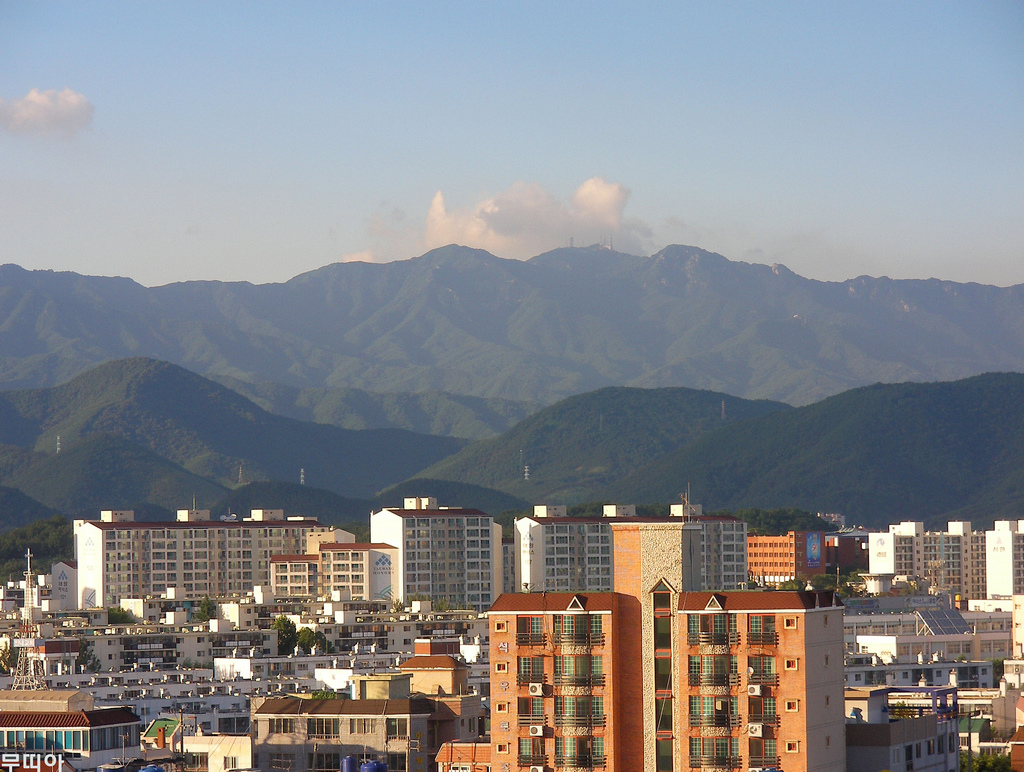|
Palgongsan (Gyeongsangbuk-do)
Palgongsan, also Palgong Mountain, and previously called Gongsan during the Goryeo dynasty, is a mountain in southeastern South Korea, lying on an outlier of the Taebaek range. It stands on the northeastern border between Daegu metropolitan city and North Gyeongsang province (including the districts of Chilgok County, Gunwi County, Yeongcheon, and Gyeongsan). Its peak is 1193 m above sea level. The mountain is the site of a number of cultural and natural heritage sites. These include Buddhist shrines from the Silla period or later, including the large and active temple of Donghwasa and the Gunwi Triad Budda Grotto (National Treasure 109). In addition, in 927 the Battle of Gong Mountain was fought between Hubaekje and Goryeo forces on the mountain's southern slope. Natural treasures include the standing stone of Gatbawi, so called from its resemblance to a traditional Korean horsehair hat, or '' gat''. The mountain, connected to downtown Daegu by bus, is a popular si ... [...More Info...] [...Related Items...] OR: [Wikipedia] [Google] [Baidu] |
Donghwasa
Donghwasa, also Donghwa Temple, is a Buddhist temple of the Jogye Order in northern Daegu, South Korea. The temple is located on the south side of Mt. Palgongsan, within the boundaries of Dohak-dong, Dong-gu, near Daegu's northern border. The name means "Temple of Paulownia Blossoms." History Donghwasa Temple (Korean: 桐華寺; 동화사) was originally established as Yugasa Temple in 493 by Ven. Geukdal. According to the Donghwasa Temple Record Monument, erected in 1931, it was renamed by Patriarch Ven. Simji in 832. The name “Donghwa (桐華; literally ‘Korean paulownia flower’)” came from a legend that the Korean paulownia bloomed even in winter at that time so people regarded it as an auspicious sign. According to the Samgungnyusa, Vinaya Master Jinpyo gave some bones with sutras engraved on them to Ven. Yeongsim, who later gave them to Patriarch Simji. In trying to decide where to enshrine these bones, Patriarch Ven. Simji climbed a mountaintop, along with ... [...More Info...] [...Related Items...] OR: [Wikipedia] [Google] [Baidu] |
Mountains Of North Gyeongsang Province
A mountain is an elevated portion of the Earth's crust, generally with steep sides that show significant exposed bedrock. Although definitions vary, a mountain may differ from a plateau in having a limited summit area, and is usually higher than a hill, typically rising at least 300 metres (1,000 feet) above the surrounding land. A few mountains are isolated summits, but most occur in mountain ranges. Mountains are formed through tectonic forces, erosion, or volcanism, which act on time scales of up to tens of millions of years. Once mountain building ceases, mountains are slowly leveled through the action of weathering, through slumping and other forms of mass wasting, as well as through erosion by rivers and glaciers. High elevations on mountains produce colder climates than at sea level at similar latitude. These colder climates strongly affect the ecosystems of mountains: different elevations have different plants and animals. Because of the less hospitable terrain and ... [...More Info...] [...Related Items...] OR: [Wikipedia] [Google] [Baidu] |
Mountains Of Daegu
A mountain is an elevated portion of the Earth's crust, generally with steep sides that show significant exposed bedrock. Although definitions vary, a mountain may differ from a plateau in having a limited summit area, and is usually higher than a hill, typically rising at least 300 metres (1,000 feet) above the surrounding land. A few mountains are isolated summits, but most occur in mountain ranges. Mountains are formed through tectonic forces, erosion, or volcanism, which act on time scales of up to tens of millions of years. Once mountain building ceases, mountains are slowly leveled through the action of weathering, through slumping and other forms of mass wasting, as well as through erosion by rivers and glaciers. High elevations on mountains produce colder climates than at sea level at similar latitude. These colder climates strongly affect the ecosystems of mountains: different elevations have different plants and animals. Because of the less hospitable terrain ... [...More Info...] [...Related Items...] OR: [Wikipedia] [Google] [Baidu] |

